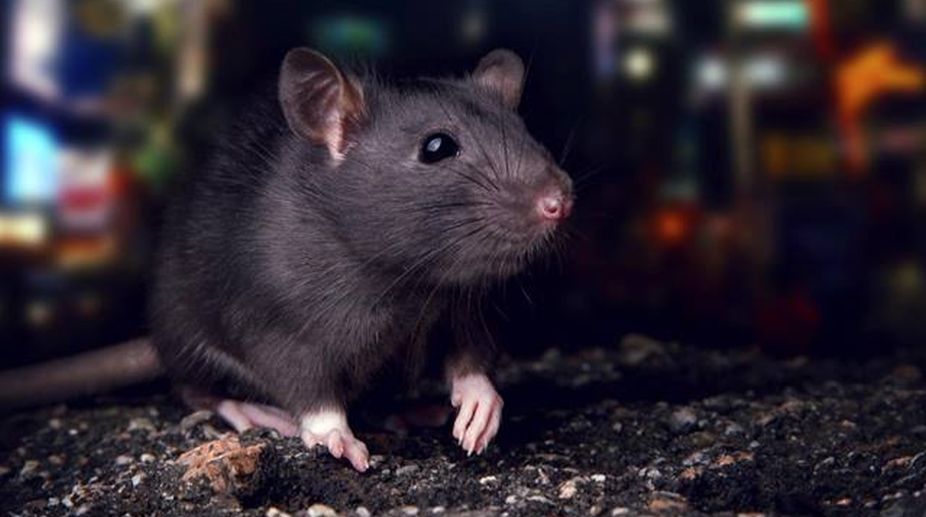The hopelessness of solving the rat menace is legendary. In the German folk tale, the Pied Piper lures the rats of Hamelin away by his music.
On not being given the promised fee, the piper leads away the children of the town. What the story underscores, however, is the futility of ordinary methods used by municipal services to deal with infestation by rats.
Advertisement
The Journal of Urban Ecology, published by Oxford University Press, carries a review of the state of knowledge, or lack of knowledge, about this animal, which is known to flourish where human communities gather.
In the context of increasing urbanisation and climate change, Michael H Parsons, Peter B Banks, Michael A Deutsch, Robert F Corrigan and Jason Munshi-South, from universities and the pest control industry in Australia and the US, stress the need to understand the habits of the city rat and examine how to focus research efforts on this area of importance.
Archaeological evidence and DNA studies indicate that rats took to colonising human habitations ever since humans changed from hunting-gathering to farming. This seems to have happened first in India, where the mouse family was a commensal (or living off humans, “sharing the table”, and a pest) since 14,000 years ago.
Glacial melting soon after led to migration of agriculture and the rodents migrated too. There is evidence that rats reached the Mediterranean basin about 10,000 years ago. Rats have travelled everywhere that humans went and ships carried them to lands where there were no rats. And everywhere they went, rats adapted and settled, often at the cost of local species.
The rise of cities, with large human aggregation, led to virtual “second cities” of rats being established, generally in burrows in the ground, crevices of masonry and in sewers and drainage. In 1982, the Urban Ecology paper observes, rodents were estimated to have cost the world’s economy over US$ 300 billion, from food loss alone (that is, without the cost from disease, damage to livestock, structures, power lines, et al).
In comparison, the cost of air pollution has been recently assessed at US$ 225 billion. The paper observes that from 2000 to 2030, human population is expected to grow by 2.2 billion, with 2.1 billion being the growth in urban areas.
This would create great resources for the proliferation of city rats. The paper further notes that climate change would result in longer active seasons for rats and for the different infectious organisms that they carry and spread. In contrast to the speed with which the problem is increasing, the science of controlling rat populations, the risks and the costs, has not made progress, the paper observes.
Poisons to exterminate them rapidly become ineffective, as rats learn to avoid them or become resistant. On the other hand, other species consume poisons, which enter the food chain.
Even special programmes like Integrated Pest Management have failed, as the rat menace in large cities has become no less acute after the programmes were started. And in any case, as long as food and shelter are available, rat populations are found to rapidly recover.
The paper says that the reason administrations persist in traditional methods, in place of more effective management, is because there is great shortage of knowledge of the ecology and behaviour of the urban rat. The last serious studies are from the 1940s.
Those involved releasing wild rats in the city or releasing unfamiliar rats among other rats, both of which involve risks and may violate current ethical norms.
Later experiments with rats in captivity did not reflect reality, as rats are quick to acclimatise and adapt. As it is difficult to work with rats in the wild, little attention has been paid by academics to the field.
It was 40 years ago that behaviour-based rodent control was suggested and 30 years since the idea of studying the response of rats to scents, so that mating behaviour could be regulated, was mooted, the paper says. Over the years, more areas of “knowledge gap” have been identified, including the need for a systematic study of diseases harboured and transmitted by rats.
In the area of mitigating damage in agriculture, an approach of “ecology based rodent management” has been effective, the paper says.
Those methods engage the community in concerted strategy, which includes timing of sowing or planting, the use of poisons and traps and maintaining hygiene.
While these methods could be more effective if there were more knowledge about the behaviour of rats, there is just no effective strategy so far to deal with the urban rat, the paper says.
Logistics apart, a reason for the problem of rats having been neglected is that the problem is complex, the paper says. The complexity extends to the number of domains — social, ecological and economic — that are involved.
Every strategy would impact these domains and call for trade-offs. An example of such “wicked problems” is the problem of environment pollution — control would impact livelihoods, prices, efficiency of the administration and may even exacerbate the problem itself.
Problems of this kind have no solutions and even success of their control is understood differently by different agencies. This is in contrast to the “tame problem”, which has a technological solution.
The other difficulty is that the problem of rats is one that people do not like to talk about. Commercial establishments would like to brush it, literally, under the carpet.
The paper cites a study, which says people so detest the topic of rats that speaking of them causes more depression than speaking of crime! And even where the problem is recognised, people would like to exterminate the accursed things rather than let them stay around for scientists to study.
Another thing is that people believe they know more about rats than they actually do. City dwellers see rats, day in and day out, and they think there is nothing more to know about them.
What city dwellers see is just a few rats, the “bold or the desperate”, which venture out of hiding, not the great many that are unseen, the paper says. And then, there is the multitude of research papers that feature rats, but laboratory-bred and not the ones we need to control.
The paper recognises that researchers would need to study rats in the real problem situations, typically where professional extermination agencies have been called in.
Incentives would then have to be offered to get the agencies and the employers to take a longer view, rather than a quick and economical immediate solution.
The paper proposes a systematic approach of identifying the problem, the stakeholders, the cost to each of them and then to design incentives to reduce conflicts of interest.
And then to collaborate and coordinate, over a wide geographical span, so that we are able take in diverse views and generalise pest control in urban settings.
The problem is serious, difficult and growing and scientific neglect cannot continue. Else, in the (unlikely) event that we control global warming, we would find the benefits eroded, if not negated, by traditional, underfoot freeloaders.
The writer can be contacted at response@simplescience.in











